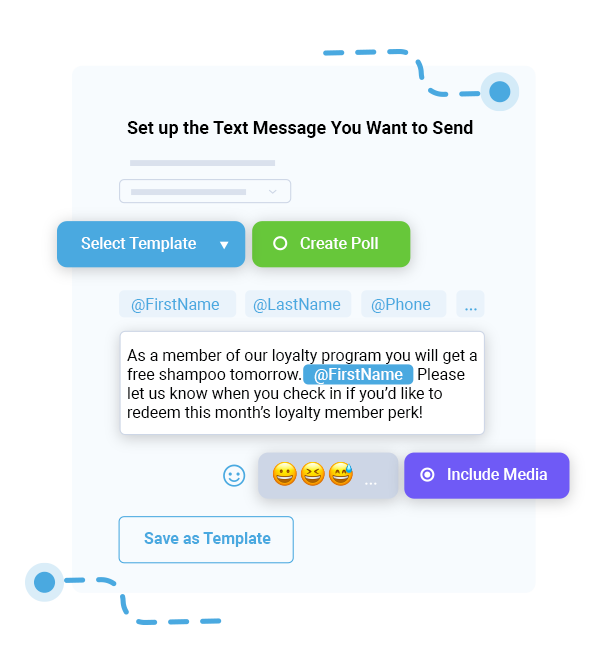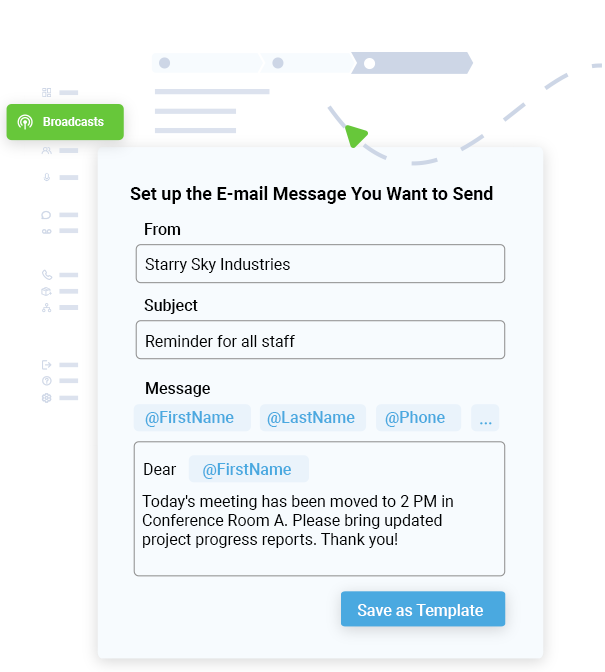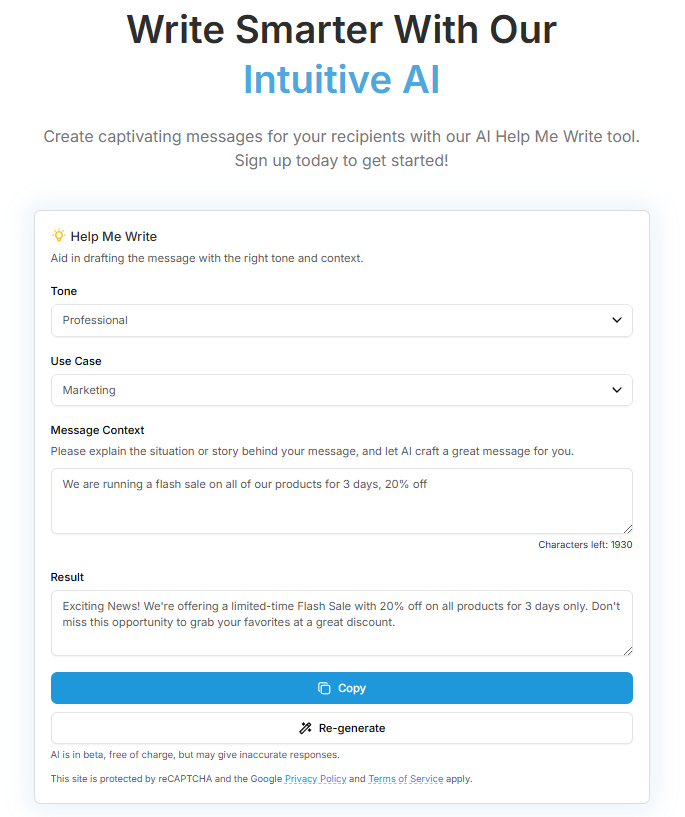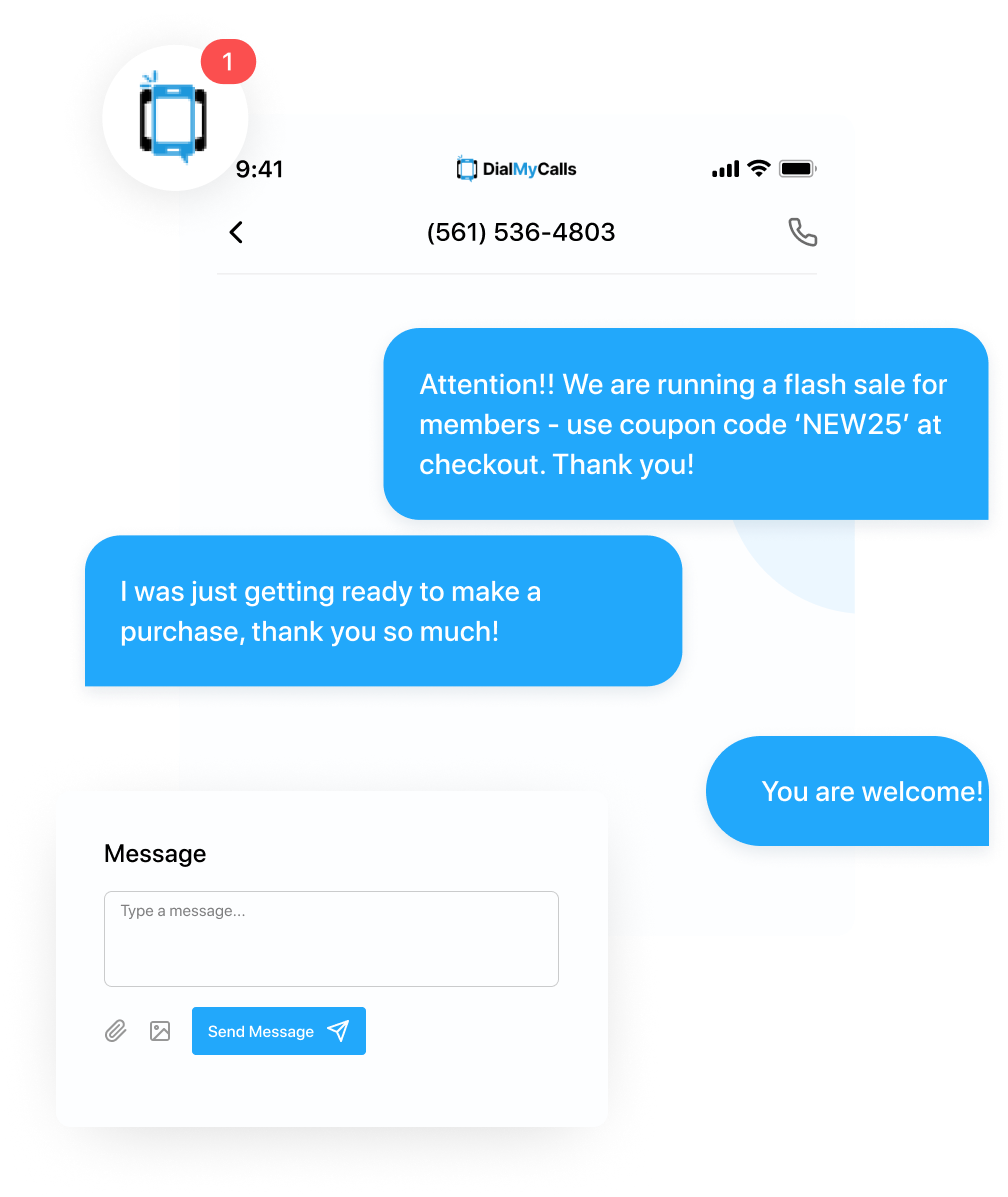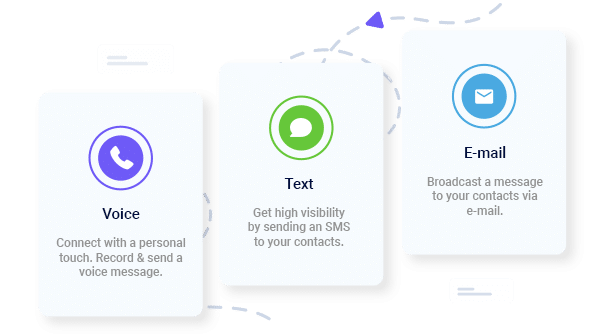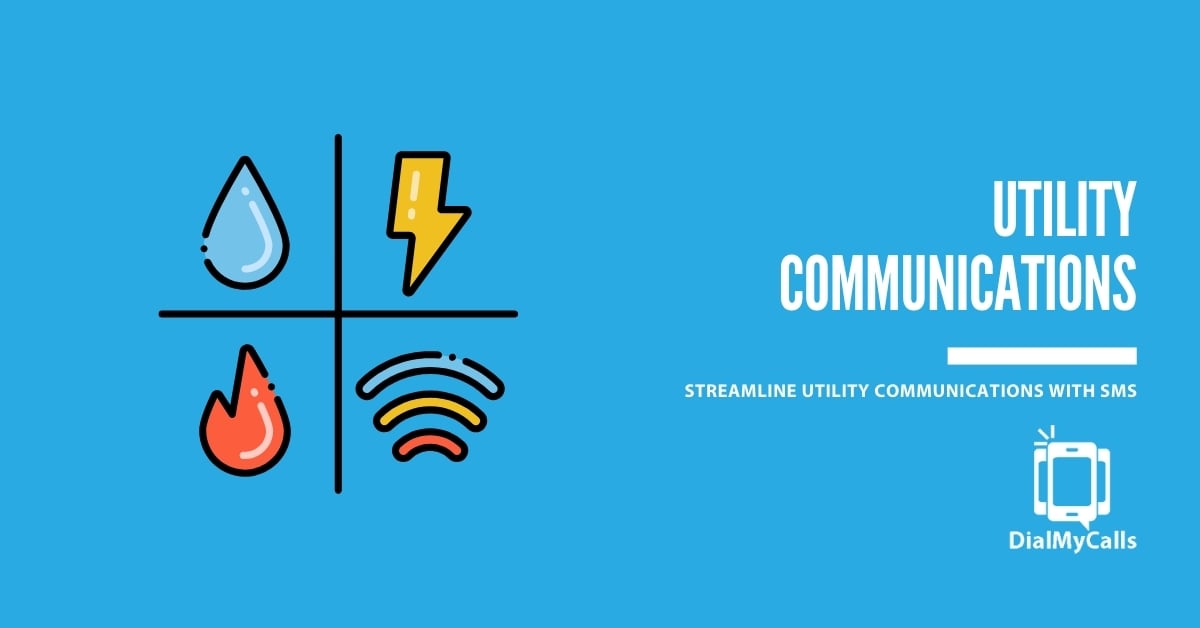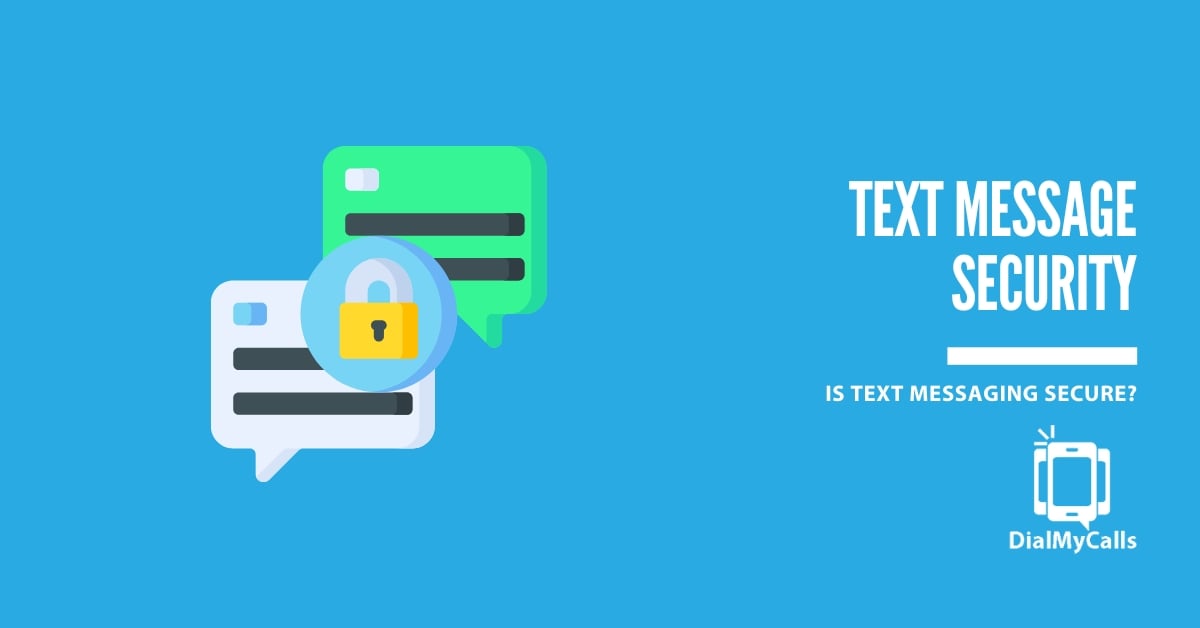Author
Tim Smith is the Media Manager at DialMyCalls, where he has leveraged his expertise in telecommunications, SaaS, SEO optimization, technical writing, and mass communication systems since 2011. Tim is a seasoned professional with over 12 years at DialMyCalls and 15+ years of online writing experience.
Try Using DialMyCalls Right Now
Start For FreeRecent Posts
- 8 Creative SMS Marketing Ideas to Boost Engagement This Summer
- 15 Ways to Use QR Codes For Event Promotion & Attendee Engagement
- Top 6 Automated Calling Service Providers For Your Business
- Boost Customer Experience with QR Codes: From Menus to Payments
- Everything You Should Know About Ringless Voicemail
Categories
“I am a youth minister and have spent hours in the past calling students individually to remind them of an upcoming event or to get out an urgent announcement. With DialMyCalls.com, I cut that time down to about 1 minute. I also love how I can see exactly who answered live and how long they listened so I know if they heard the whole message. DialMyCalls.com is the best website I have stumbled upon all year! Thanks!”
Central Baptist Church
Try Using DialMyCalls Right Now
Start For FreeThe Future of Communication: How Americans Connect in 2025 & Beyond
Posted by Tim Smith in General Post on March 28, 2017
Updated on February 19, 2025
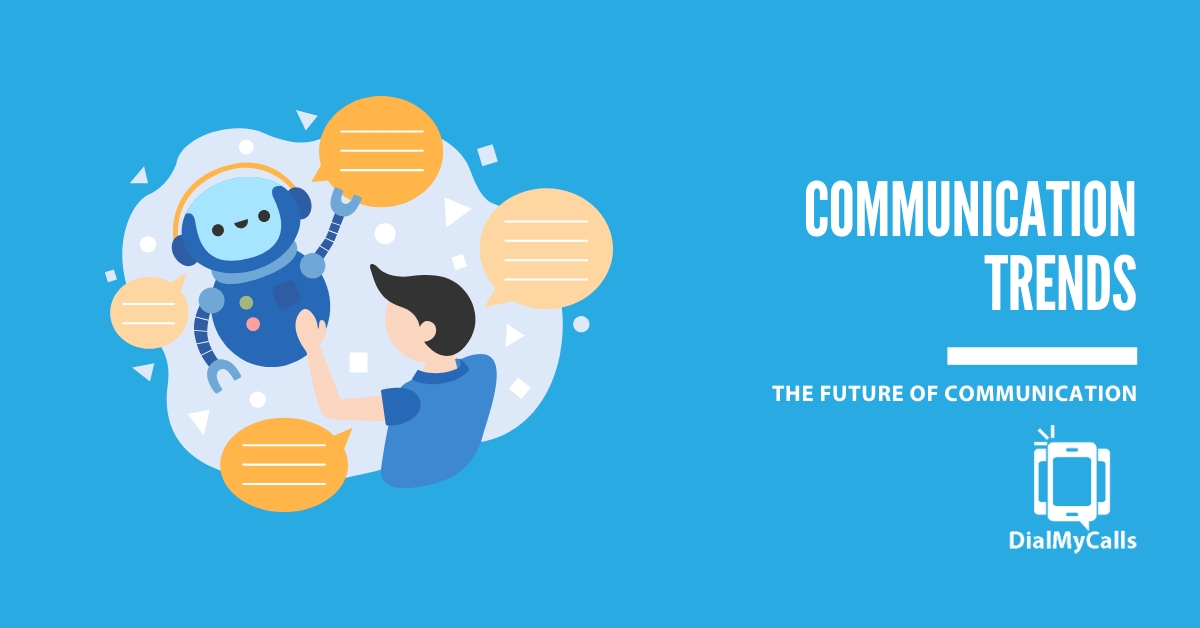
Communication has come a long way, morphing from simple text messages to an intricate web of AI, video calls, and omnichannel experiences. The past decade has been a whirlwind, driven by technological leaps, consumer habits that refuse to sit still, and, yes, the curveball that was the COVID-19 pandemic. These factors have rewritten the communication rulebook for businesses, marketers, and individuals.
Understanding these trends isn’t just smart; it’s a necessity for survival. Whether you’re a business aiming to keep customers engaged or a tech enthusiast wondering what’s next, staying informed and adapting to these changes is non-negotiable.
So, let’s dive into how we got here and where we’re heading.
Stay Connected with Mass Notifications
Create & Send a Broadcast to Thousands in Seconds
Past Communication Landscape (2016 to 2020)
Back in 2016, communication was simpler yet surprisingly dynamic. Here’s how things shaped up:
The Social Media Takeover
Platforms like Facebook, Instagram, and Twitter had transcended their initial purpose of sharing personal updates and photos. They became comprehensive communication hubs where brands and individuals can interact in real time, share information, and engage in discussions.
Social media wasn’t just a trend; it was the new normal. Businesses began leveraging these platforms for real-time customer engagement, influencer marketing, and community building.
Text Messaging’s Steady Reign
Despite the rise of flashy apps, good old SMS remained a staple. Short and to the point, text messages retained their spot as a universal communication tool.
Services like DialMyCalls added a new dimension by enabling businesses to send bulk text messages to customers, making SMS a key player in marketing and alerts. It wasn’t just about personal communication anymore—it was about convenience and reach.
The Video Calling Revolution
Platforms like Zoom and Skype turned the concept of face-to-face conversations on its head. What was once reserved for special occasions became a daily routine, especially for long-distance communication and business meetings. This shift not only bridged geographical gaps but also significantly reduced travel costs for businesses.
Families connected across continents, and businesses held virtual conferences, setting the stage for what would become a necessity during the pandemic years.
Business Communication Evolution
Email marketing tools like Mailchimp and customer service platforms like Zendesk refined how companies connected with their audiences. Efficiency was the name of the game.
Automated workflows, streamlined processes, and analytics tools provided deeper insights into customer behavior, enabling personalized and timely communication.
With these trends setting the stage, communication began its journey toward a more interconnected, tech-driven era.
Current Trends in 2025 Communication
Fast forward to 2025, and the communication landscape is nothing short of futuristic. Here’s what’s trending:
AI and Automation in Communication
Chatbots and automated messaging are now everywhere. From resolving customer complaints to sending reminders, AI has made communication faster and more efficient—even if a little impersonal at times.
However, tools leveraging natural language processing are constantly evolving and have bridged gaps between human and machine interactions, redefining customer service expectations. As businesses integrate these technologies, the line between human and automated responses continues to blur.
The Remote Work Culture
Remote and hybrid work have become integral to our current work culture, and they’ve turned tools like Slack, Microsoft Teams, and Zoom into workplace staples. These platforms are doing more than keeping us connected; they’re where the work actually happens. Whether it’s brainstorming over a quick chat, jumping on a quick huddle to hash out details, or sharing files without email clutter, these tools have streamlined how teams collaborate.
The real game-changer, though, is their flexibility. They make it easier to stay in sync, no matter your time zone or work style. And while they may not replace the spontaneous chats we used to have at the office coffee machine, they’ve found their own way to bring people together—even if it’s through a string of emojis or a perfectly timed GIF in a group chat. The result? A work environment that’s more connected than ever, even when we’re miles apart.
The Growth of Text and Instant Messaging
SMS is still alive and kicking, but messaging apps like WhatsApp and Telegram have taken it up a notch with features like voice notes, multimedia sharing, and even payment integrations.
To stay competitive, businesses relying on SMS should consider upgrading to interactive MMS services through tools like DialMyCalls.
These platforms offer businesses a unique way to connect with users through highly engaging and localized conversations. The growing popularity of apps like these underscores the need for businesses to update themselves continuously with industry standards.
Voice Assistants on the Rise
Alexa and Siri aren’t just playing music anymore. They’re scheduling meetings, sending messages, and even cracking jokes to keep our lives organized and mildly entertaining.
The integration of voice assistants into home appliances and cars has further blurred the lines between communication and everyday convenience. As these tools become more intuitive, they reshape how we think about multitasking and connectivity.
Instant Communication, Whenever You Need It
Send Real-Time SMS & Voice Call Alerts from Anywhere
Video Communication’s Continued Dominance
Whether it’s TikTok trends, YouTube shorts, or professional Zoom meetings, video remains the preferred medium. It’s personal, engaging, and a lot harder to ignore than a text.
Businesses are therefore starting to leverage live streams and interactive video ads to reach their audiences in real time. The continued rise of video highlights how visual storytelling resonates across demographics.
Digital Privacy and Security Concerns
With great communication power comes great responsibility. Encrypted apps like Signal and advancements in end-to-end encryption are addressing growing concerns over data privacy.
Companies are also adopting stricter compliance standards to reassure users about how their data is handled. As privacy becomes a priority, trust is emerging as a key differentiator for communication platforms.
Omnichannel Communication
Businesses are mastering the art of using multiple platforms simultaneously. A single interaction might start with an SMS, transition to social media, and end with an email confirmation.
The key to success lies in ensuring these transitions are seamless and aligned with the customer’s journey, creating a unified experience without overwhelming the user. This omnichannel approach highlights the importance of integration in modern communication strategies.
Each of these trends builds on the other, creating a complex but exciting web of interconnected communication methods.
The Role of Generational Differences in Communication Preferences
Generational gaps aren’t just about music tastes anymore; they’re reshaping how we communicate. Each generation has its own quirks and preferences, and understanding these differences can help you tailor your approach.
- Generation Alpha: Born into a world of touchscreens and voice assistants, this generation expects communication to be intuitive and visual. Video content, AR/VR experiences, and interactive platforms are their playground. For businesses, appealing to them means embracing gamification and immersive storytelling.
- Gen Z: Digital natives through and through, Gen Z thrives on social media, memes, and instant gratification. They demand quick responses, prefer DMs to emails, and speak fluent emoji. Authenticity is non-negotiable—brands must meet them with interactive and engaging content that feels personal.
- Millennials: Millennials bridge the gap between the old and the new. They’re just as comfortable with social media as they are with emails and text messaging. They value convenience, clarity, and brands that align with their values. Messaging apps with features like group chats and multimedia sharing resonate strongly with this cohort.
- Gen X: Gen Xers are pragmatists who lean toward emails, phone calls, and straightforward communication. While they’ve adopted tools like Zoom and Microsoft Teams for remote work, they’re often wary of trends that seem overly complex. To connect with them, simplicity and efficiency are key.
- Baby Boomers: This generation sticks to the tried and true, favoring phone calls and emails as their primary modes of communication. However, they’ve increasingly embraced video calls and messaging apps, especially to stay in touch with family. Patience and clarity go a long way in resonating with Boomers.
How Communication Will Evolve in the Future (Beyond 2025)
So, what’s next? Buckle up, because the future of communication promises to be mind-blowing:
The Rise of AR and VR
Augmented and virtual reality are no longer just for gamers. Imagine attending a business meeting where it feels like you’re sitting across the table—while still wearing pajamas at home. Companies like Spatial are using AR to create immersive workspaces, and platforms like Engage VR enable virtual conferences with a physical feel.
The Power of 5G Networks
Faster internet speeds mean smoother video calls, quicker downloads, and an overall better communication experience.
DialMyCalls, for instance, uses faster networks to enhance the delivery of mass notifications, ensuring critical messages reach users in seconds. Buffering? Never heard of her.
Next-Generation Messaging Services
AI-driven predictive messaging will make responses faster and smarter. Virtual assistants will handle mundane tasks, leaving us more time for meaningful interactions—or endless scrolling, depending on your priorities.
Companies like DialMyCalls are already incorporating smarter messaging solutions to streamline communications for businesses, schools, and community organizations.
Ethical Considerations
With advanced communication tools come complex privacy issues. Striking a balance between innovation and ethics will be crucial to ensure trust doesn’t erode. For instance, debates around facial recognition in AR devices highlight the need for transparency and user consent.
Communication Shaping Social Movements
Digital platforms will continue to play a pivotal role in mobilizing people and driving societal change. Activism is now just a click away, as evidenced by movements like Black Lives Matter, where real-time communication tools helped coordinate protests and spread awareness globally.
Key Takeaways and How to Adapt
Adapting to these changes doesn’t have to be daunting. Here’s how to stay ahead:
- Embrace Emerging Tools: Don’t resist new platforms or technologies. Learn them, master them, and use them to your advantage.
- Understand Generational Preferences: Tailor your communication strategy to fit the audience. What works for a Gen Z influencer might not fly with a Baby Boomer CEO.
- Stay Privacy-Savvy: As digital privacy concerns grow, being transparent and responsible with data will build trust and loyalty.
- Keep Learning: The communication landscape changes fast. Staying informed and adaptable is your best bet to thrive.
Conclusion
The way we connect with each other is evolving faster than ever, driven by technology, consumer habits, and cultural shifts. For businesses, marketers, and individuals alike, understanding these trends is no longer optional. It’s essential.
So, whether you’re navigating the complexities of omnichannel marketing or figuring out how to make Alexa stop ordering things you didn’t ask for, one thing is clear: The future of communication is bright, exciting, and maybe just a little unpredictable.
Mass Texting, Made Easy
Send Bulk Text Message Campaigns in Seconds
